Franco Turini
The explanation dialogues: an expert focus study to understand requirements towards explanations within the GDPR
Jan 09, 2025



Abstract:Explainable AI (XAI) provides methods to understand non-interpretable machine learning models. However, we have little knowledge about what legal experts expect from these explanations, including their legal compliance with, and value against European Union legislation. To close this gap, we present the Explanation Dialogues, an expert focus study to uncover the expectations, reasoning, and understanding of legal experts and practitioners towards XAI, with a specific focus on the European General Data Protection Regulation. The study consists of an online questionnaire and follow-up interviews, and is centered around a use-case in the credit domain. We extract both a set of hierarchical and interconnected codes using grounded theory, and present the standpoints of the participating experts towards XAI. We find that the presented explanations are hard to understand and lack information, and discuss issues that can arise from the different interests of the data controller and subject. Finally, we present a set of recommendations for developers of XAI methods, and indications of legal areas of discussion. Among others, recommendations address the presentation, choice, and content of an explanation, technical risks as well as the end-user, while we provide legal pointers to the contestability of explanations, transparency thresholds, intellectual property rights as well as the relationship between involved parties.
Declarative Reasoning on Explanations Using Constraint Logic Programming
Sep 01, 2023Abstract:Explaining opaque Machine Learning (ML) models is an increasingly relevant problem. Current explanation in AI (XAI) methods suffer several shortcomings, among others an insufficient incorporation of background knowledge, and a lack of abstraction and interactivity with the user. We propose REASONX, an explanation method based on Constraint Logic Programming (CLP). REASONX can provide declarative, interactive explanations for decision trees, which can be the ML models under analysis or global/local surrogate models of any black-box model. Users can express background or common sense knowledge using linear constraints and MILP optimization over features of factual and contrastive instances, and interact with the answer constraints at different levels of abstraction through constraint projection. We present here the architecture of REASONX, which consists of a Python layer, closer to the user, and a CLP layer. REASONX's core execution engine is a Prolog meta-program with declarative semantics in terms of logic theories.
Reason to explain: Interactive contrastive explanations (REASONX)
May 29, 2023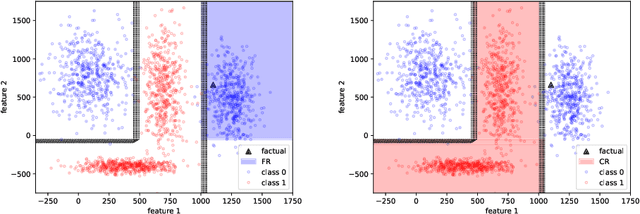
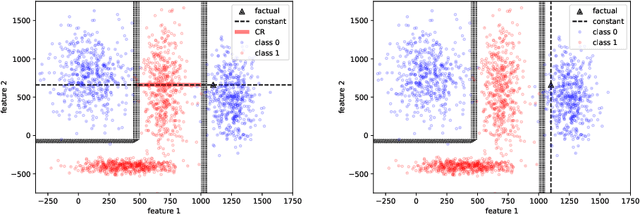
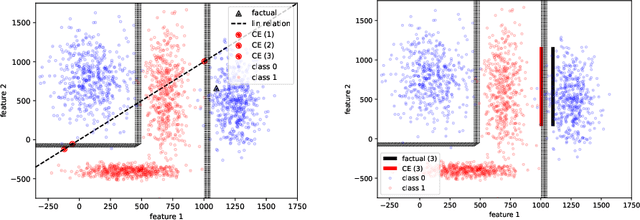
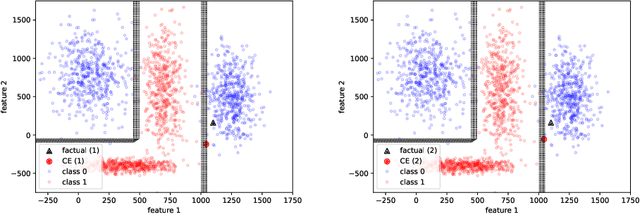
Abstract:Many high-performing machine learning models are not interpretable. As they are increasingly used in decision scenarios that can critically affect individuals, it is necessary to develop tools to better understand their outputs. Popular explanation methods include contrastive explanations. However, they suffer several shortcomings, among others an insufficient incorporation of background knowledge, and a lack of interactivity. While (dialogue-like) interactivity is important to better communicate an explanation, background knowledge has the potential to significantly improve their quality, e.g., by adapting the explanation to the needs of the end-user. To close this gap, we present REASONX, an explanation tool based on Constraint Logic Programming (CLP). REASONX provides interactive contrastive explanations that can be augmented by background knowledge, and allows to operate under a setting of under-specified information, leading to increased flexibility in the provided explanations. REASONX computes factual and constrative decision rules, as well as closest constrative examples. It provides explanations for decision trees, which can be the ML models under analysis, or global/local surrogate models of any ML model. While the core part of REASONX is built on CLP, we also provide a program layer that allows to compute the explanations via Python, making the tool accessible to a wider audience. We illustrate the capability of REASONX on a synthetic data set, and on a a well-developed example in the credit domain. In both cases, we can show how REASONX can be flexibly used and tailored to the needs of the user.
GLocalX -- From Local to Global Explanations of Black Box AI Models
Jan 26, 2021

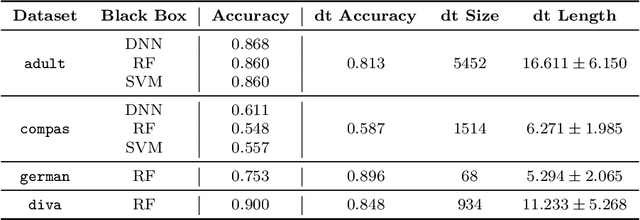
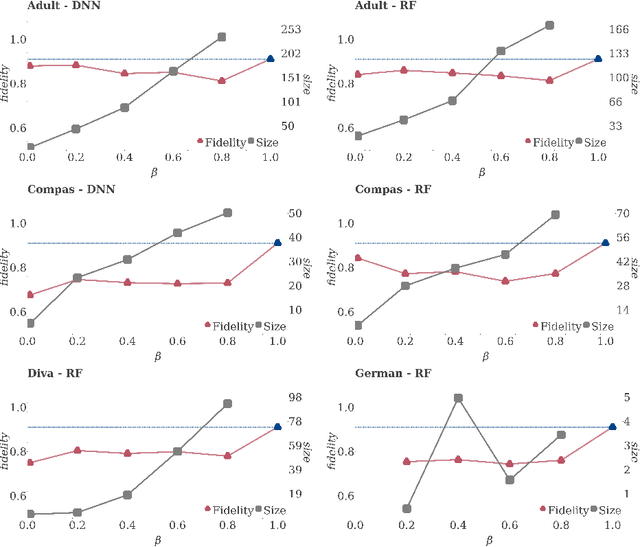
Abstract:Artificial Intelligence (AI) has come to prominence as one of the major components of our society, with applications in most aspects of our lives. In this field, complex and highly nonlinear machine learning models such as ensemble models, deep neural networks, and Support Vector Machines have consistently shown remarkable accuracy in solving complex tasks. Although accurate, AI models often are "black boxes" which we are not able to understand. Relying on these models has a multifaceted impact and raises significant concerns about their transparency. Applications in sensitive and critical domains are a strong motivational factor in trying to understand the behavior of black boxes. We propose to address this issue by providing an interpretable layer on top of black box models by aggregating "local" explanations. We present GLocalX, a "local-first" model agnostic explanation method. Starting from local explanations expressed in form of local decision rules, GLocalX iteratively generalizes them into global explanations by hierarchically aggregating them. Our goal is to learn accurate yet simple interpretable models to emulate the given black box, and, if possible, replace it entirely. We validate GLocalX in a set of experiments in standard and constrained settings with limited or no access to either data or local explanations. Experiments show that GLocalX is able to accurately emulate several models with simple and small models, reaching state-of-the-art performance against natively global solutions. Our findings show how it is often possible to achieve a high level of both accuracy and comprehensibility of classification models, even in complex domains with high-dimensional data, without necessarily trading one property for the other. This is a key requirement for a trustworthy AI, necessary for adoption in high-stakes decision making applications.
Open the Black Box Data-Driven Explanation of Black Box Decision Systems
Jun 26, 2018

Abstract:Black box systems for automated decision making, often based on machine learning over (big) data, map a user's features into a class or a score without exposing the reasons why. This is problematic not only for lack of transparency, but also for possible biases hidden in the algorithms, due to human prejudices and collection artifacts hidden in the training data, which may lead to unfair or wrong decisions. We introduce the local-to-global framework for black box explanation, a novel approach with promising early results, which paves the road for a wide spectrum of future developments along three dimensions: (i) the language for expressing explanations in terms of highly expressive logic-based rules, with a statistical and causal interpretation; (ii) the inference of local explanations aimed at revealing the logic of the decision adopted for a specific instance by querying and auditing the black box in the vicinity of the target instance; (iii), the bottom-up generalization of the many local explanations into simple global ones, with algorithms that optimize the quality and comprehensibility of explanations.
A Survey Of Methods For Explaining Black Box Models
Jun 21, 2018
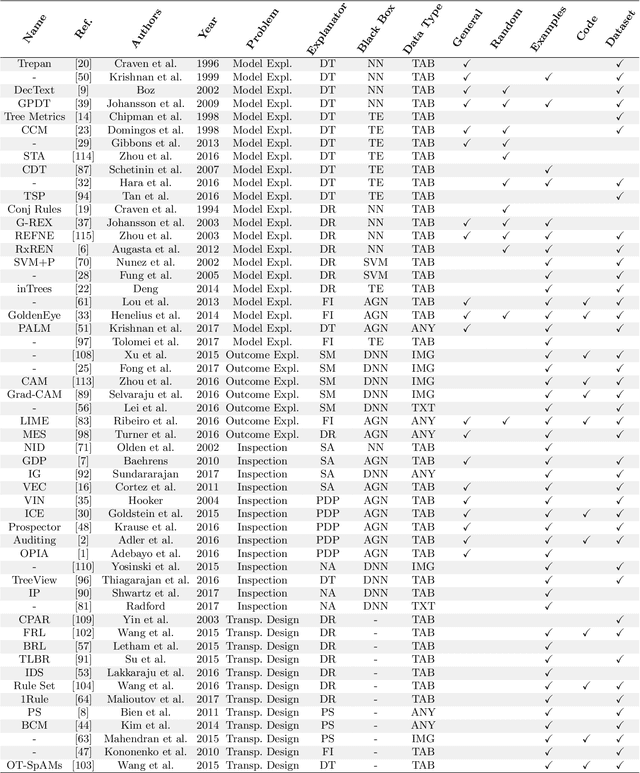

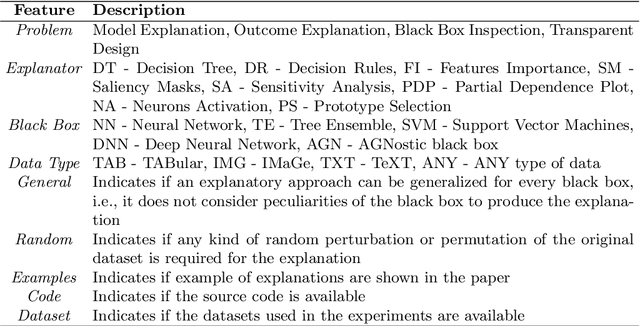
Abstract:In the last years many accurate decision support systems have been constructed as black boxes, that is as systems that hide their internal logic to the user. This lack of explanation constitutes both a practical and an ethical issue. The literature reports many approaches aimed at overcoming this crucial weakness sometimes at the cost of scarifying accuracy for interpretability. The applications in which black box decision systems can be used are various, and each approach is typically developed to provide a solution for a specific problem and, as a consequence, delineating explicitly or implicitly its own definition of interpretability and explanation. The aim of this paper is to provide a classification of the main problems addressed in the literature with respect to the notion of explanation and the type of black box system. Given a problem definition, a black box type, and a desired explanation this survey should help the researcher to find the proposals more useful for his own work. The proposed classification of approaches to open black box models should also be useful for putting the many research open questions in perspective.
Local Rule-Based Explanations of Black Box Decision Systems
May 28, 2018

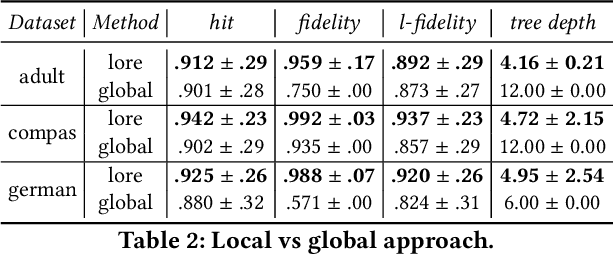
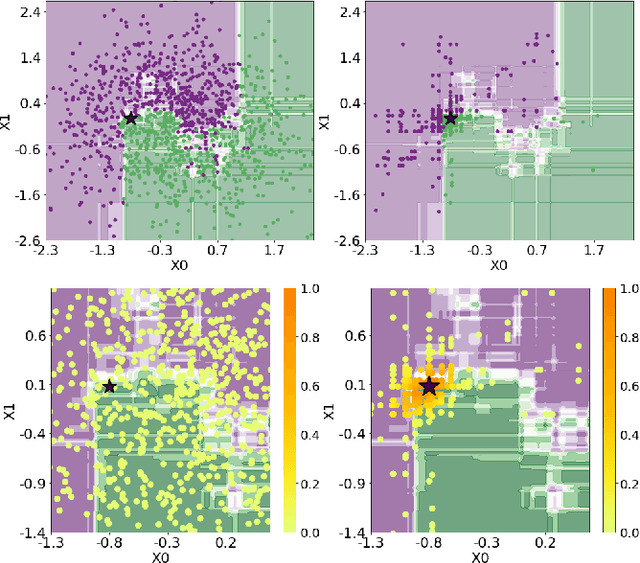
Abstract:The recent years have witnessed the rise of accurate but obscure decision systems which hide the logic of their internal decision processes to the users. The lack of explanations for the decisions of black box systems is a key ethical issue, and a limitation to the adoption of machine learning components in socially sensitive and safety-critical contexts. %Therefore, we need explanations that reveals the reasons why a predictor takes a certain decision. In this paper we focus on the problem of black box outcome explanation, i.e., explaining the reasons of the decision taken on a specific instance. We propose LORE, an agnostic method able to provide interpretable and faithful explanations. LORE first leans a local interpretable predictor on a synthetic neighborhood generated by a genetic algorithm. Then it derives from the logic of the local interpretable predictor a meaningful explanation consisting of: a decision rule, which explains the reasons of the decision; and a set of counterfactual rules, suggesting the changes in the instance's features that lead to a different outcome. Wide experiments show that LORE outperforms existing methods and baselines both in the quality of explanations and in the accuracy in mimicking the black box.
 Add to Chrome
Add to Chrome Add to Firefox
Add to Firefox Add to Edge
Add to Edge